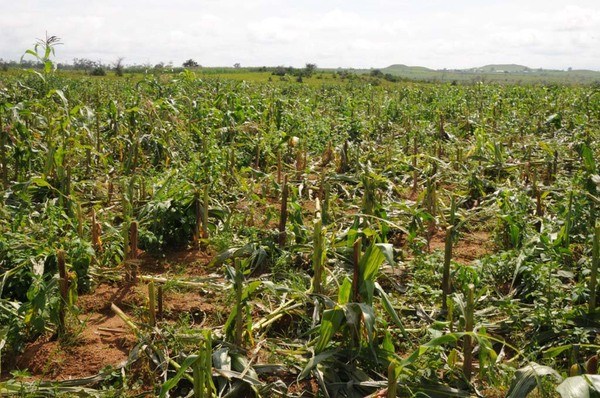
Due to persistent conflict, severe drought and economic instability, Nigeria and three other countries face a credible risk of famine in 2017, a report has said.
In a report released Wednesday, the Famine Early Warning System Network, FEWS NET, an agency supported by the United States Agency for International Development, USAID, said the Boko Haram crisis continues to contribute to large scale population displacement, limit market activity, and restrict normal livelihoods.
The agency disclosed further that the combined magnitude, severity, and geographic scope of anticipated emergency food assistance needs during 2017 is unprecedented in recent decades, adding that an estimate of 70 million people across 45 countries will require emergency food
assistance this year.
“Food insecurity during 2017 will be driven primarily by three factors. Most importantly, persistent conflict is disrupting livelihoods, limiting trade, and restricting humanitarian access across many regions, including the Lake Chad Basin, the Central African Republic, Sudan, South Sudan, the Great Lakes Region, Somalia, Yemen, Ukraine, Syria, Iraq, and Afghanistan,” the report stated.
“A second important driver is drought, especially those driven by the 2015/16 El Nino and the 2016/17 La Nina. In Southern Africa and the Horn of Africa, significantly below-average rainfall has sharply reduced crop harvests and severely limited the availability of water and pasture for livestock. In Central Asia, snowfall to date has also been below average, potentially limiting the water available for irrigated agriculture during 2017.
“Finally, economic instability, related to conflict, a decline in foreign reserves due to low global commodity prices, and associated currency depreciation have contributed to very high staple food prices in Nigeria, Malawi, Mozambique, South Sudan, and Yemen.”
According to the report, given the reduced capacity to cope and the possibility that additional shocks will occur, Nigeria and three other countries face a credible risk of Famine (IPC Phase 5). The three other countries are Somalia, South Sudan, and Yemen.
In addition to the sheer size of the food insecure population, the report stated that a persistent lack of access to adequate food and income over the past three years has left households in the worst-affected countries with little ability to manage future shocks.
In north-east Nigeria, the region most affected by the Boko Haram crisis, the reports says evidence suggests that famine occurred in 2016 and could be ongoing.
The report however noted that in order to save lives, continued efforts to resolve conflict and improve humanitarian access are essential.
It added that in addition, given the scale of anticipated need, donors and implementing partners should allocate available financial and human resources to those areas where the most severe food insecurity is likely.
The report comes two months after the presidency warned Nigerians of a likelihood of famine of the excess export of Nigerian grains is not checked.
”Huge demand for our grains in the global market is creating an excellent environment for the mindless export of Nigerian food across our borders and unless this is curtailed, Nigerian markets will be bereft of grains by January next year,” presidential spokesperson Garba Shehu said in November.
He said the Ministry of Agriculture advised the president to call the attention of all Nigerians to the issue which, if not addressed promptly, could lead to a shortage of grains in the country.
END

Be the first to comment